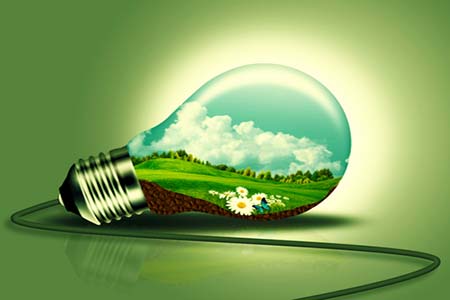A Closer Look at Environmental Certification Programs

March 28, 2014
Caveat Emptor: Let the Buyer Beware.
The phrase has been around for centuries, but it takes on a new meaning for those of us who care about sustainability and the environmental impacts of our buying decisions. If we desire healthy products for our homes and families, or want to support companies that use responsible manufacturing processes – or are committed to making the world a better place, how can we beware?
We need transparency.
You’re already being deluged with claims, labels and certifications on consumer products that go “in you” (organic food), “on you” (hypoallergenic cosmetics) and “around you” (BPA-free toys). Claims, labels and certifications are a first step toward transparency. Consumers are increasingly relying on this information to decide which products to buy, and I expect that trend will continue and expand.
Claims, labels and certifications are not created equal. The best come from independent organizations and are called third-party certifications. Product manufacturers submit samples, and they are tested for compliance against a publicly available standard. In some cases, the standard deals with one aspect of the product – a single attribute such as energy use. Others that are more holistic include multi-attribute standards, such as the USDA’s organic program for food products. If you rely on these or other certifications, do the research and understand what they mean and what manufacturers must do to earn them.
A Look at Environmental Certification Programs
How does this apply to products we choose for our kitchens and bathrooms? There are several environmental certification programs that are already in widespread use. Among these are the EPA’s EnergyStar and WaterSense programs, UL Environment’s Greenguard and C2C (Cradle to Cradle).
The EPA’s EnergyStar recently celebrated its 20th year and is easily the most recognized environmental label for consumer products, with an aided brand awareness of 87 percent in 2012. There are currently more than 18,000 EnergyStar partners and 65 categories of products that can receive the label. In kitchens and bathrooms, products such as refrigerators, dishwashers, lighting, windows, ventilation fans and water heaters are part of this label. In general, products that are in the top 25 percent of their categories for energy efficiency can carry the label, and the requirements are revised every three years to continue to drive further efficiency. Products are tested by third-party-certified labs, and regular audits are done to ensure ongoing compliance. Of note is that products such as clothes washers and dishwashers that use both energy and water must meet strict water efficiency requirements to qualify for the label. The EnergyStar label is a must for any appliance purchase.
EPA WaterSense is the younger cousin of EnergyStar. Launched in 2006, the WaterSense label identifies products that use at least 20 percent less water than allowed, while still passing strict performance criteria. The first specification was developed for tank-type toilets and includes a flushing performance requirement. Toilet manufacturers have created products that greatly surpass what’s required in the specification, thus ensuring that toilets sold today are the best performing ever, while using only 1.28 gallons (4.8 liters) of water per flush. In addition to tank-type toilets, WaterSense product specifications exist for bathroom faucets and aerators, showerheads and urinals. The program also covers weather-based irrigation controllers and single-family homes. Through 2012, the EPA claims that WaterSense products sold in the U.S. have saved consumers nearly 500 billion gallons of water and nearly $9 billion in water and energy costs.
Since people spend more 90 percent of their lives indoors, making sure they have healthy air to breathe is very important. The UL Environment’s GREENGUARD Certification program helps manufacturers create – and helps buyers identify and trust – interior products and materials that have low chemical emissions, improving the quality of the air in which the products are used. All certified products must meet stringent emissions standards based on established chemical exposure criteria. Products that carry the GREENGUARD label exceed the most stringent state standards for volatile organic compound emissions. Look for paints, wall coverings, countertops, flooring and tub/shower enclosures that are certified by UL Environment.
Cradle to Cradle is one of several “multi-attribute” sustainability certifications for building products. The Cradle to Cradle Certified Product Standard is a continuous improvement methodology that provides a path to manufacturing healthy and sustainable products. The standard rewards achievement in five categories and at five levels of certification, C2C Certified represents the most comprehensive product quality mark available. C2C evaluates products based on healthy materials and processes, material reuse and recycling, energy and greenhouse gas emissions, water use and fair treatment of stakeholders throughout the supply chain. Achieving certification takes some time and cost, but an increasing number of products are now available that carry the C2C label.
So as you are deciding what products to specify for your next kitchen or bathroom remodel, be sure to do your homework and let these environmental labels help guide your choices.
More News
April 24, 2024 | People
Oatey Announces New COO and CCO
April 23, 2024 | Trends & Inspirations
Sustainability Report: More Education Needed for Green K&B Design
April 22, 2024 | Awards & Events, Trends & Inspirations
A Look Inside the 2024 Atlanta Homes & Lifestyles Southeastern Designer Showhouse
April 22, 2024 | KBB Collective
Top Designer Shares Favorite KBIS 2024 Products
April 22, 2024 | Trends & Inspirations
Survey: Nearly Half of Homeowners Invest in Green Plumbing
April 2, 2024 | Sponsored
Whirlpool Corp. Brings Purposeful Innovation Home